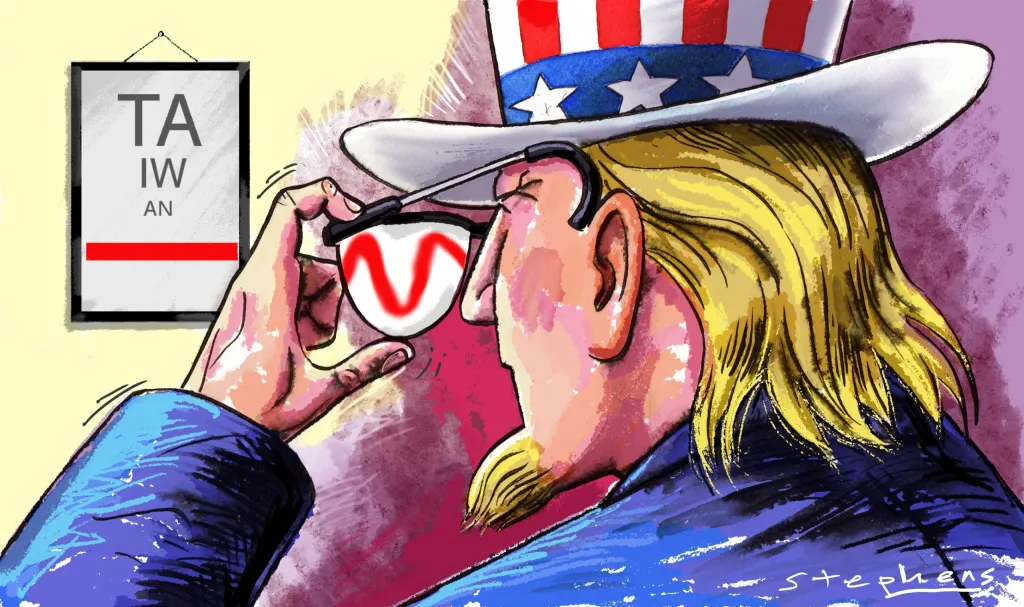China’s Red Lines on Taiwan Are Clear Regardless of the US’ Policy of Strategic Ambiguity
BRICS, 11 Jul 2022
Zhou Bo | South China Morning Post/Scheer Post - TRANSCEND Media Service
10 Jul 2022 – In spite of Biden’s reiteration afterwards of US adherence to the “one China” policy, his apparent gaffe – the third in nine months – would seem to signal a burgeoning US policy of “strategic clarity”, a shift from its decades-old policy of “strategic ambiguity”.
Will the United States come to defend Taiwan militarily in a war across the Taiwan Strait? This million-dollar question so far has two answers from the same administration – yes, according to US President Joe Biden when he was asked in Tokyo in late May; not necessarily, according to White House aides who quickly walked back his comment and said America’s “one China” policy had not changed.
This question becomes all the more interesting if one compares Biden’s attitudes towards Moscow and Beijing. Ever since the beginning of the war in Ukraine, Biden has consistently said US troops would not directly engage in this conflict.
If Biden is determined to avoid direct conflict with Russia, why is he so adamant to provoke a potential war with China? The People’s Liberation Army, the largest armed force in the world, would be no less formidable than the Russian military.
The PLA Navy has three aircraft carriers – compared with Russia’s one aircraft carrier that has been undergoing repairs for years – and even more ships than the US Navy. On June 17, China unveiled its third aircraft carrier, the Fujian, a locally designed carrier equipped with an electromagnetic catapult for launching aircraft.
So, if China is indeed a greater long-term threat than Russia, as the Biden administration has concluded, shouldn’t Washington try to avoid a conflict with China, especially as it would be fought in a faraway battlefield where the US has fewer allies while Beijing has all the advantages of fighting on home turf?
Perhaps the reason is, unlike Moscow that has threatened Nato with nuclear attacks, Beijing vows it would never be the first to use nuclear weapons in any circumstances.
If Russia’s nuclear stockpile – the world’s largest – had played a decisive role in deterring US involvement, Beijing might have to reconsider its “small and effective” nuclear arsenal. Theoretically, a no-first-use policy requires a large nuclear arsenal to enable an effective retaliatory second strike after surviving the enemy’s first strike.
In spite of Biden’s reiteration afterwards of US adherence to the “one China” policy, his apparent gaffe – the third in nine months – would seem to signal a burgeoning US policy of “strategic clarity”, a shift from its decades-old policy of “strategic ambiguity”.
Supporters of strategic ambiguity believe such a policy would deter China while not emboldening those in Taiwan who favour independence. Supporters of strategic clarity, however, argue that such vagueness is already inadequate to deter a possible attack by mainland China.
Notwithstanding China’s determination for reunification and the PLA sending its aircraft to fly near Taiwan as a warning, there is no indication that the mainland is accelerating its plan to take over Taiwan because of the war in Ukraine.
China’s 2022 defence budget, announced after the eruption of the conflict, was kept within 2 per cent of GDP, as it has been in recent years. It speaks volumes of China’s assessment of the security environment and its confidence about eventual reunification with Taiwan.
According to China’s Anti-Secession Law, China would only resort to non-peaceful means in its attempt to reunify with the island under three circumstances: Taiwan has declared independence; a major incident has occurred leading to Taiwan’s secession from China; or, if all the possible avenues for a peaceful reunification have been completely exhausted.
The probability of the Taiwanese authorities declaring independence is next to impossible, since it would most certainly invite a military response from across the strait. But, in Beijing’s eyes, Washington has tried repeatedly to create “incidents” to impede mainland efforts for peaceful reunification.
The Pentagon has sent more warships sailing through the Taiwan Strait in recent years – 30 since the start of 2020. Last year, The Wall Street Journal reported that a US special operations unit and a contingent of marines have been secretly operating in Taiwan to train military forces there.
Beijing has good reason to suspect Washington is only paying lip service to its “one China” pledge. If the competition between China and the US is going to be “extreme”, as Biden described, and if indeed China is “the only country with both the intent to reshape the international order and, increasingly, the economic, diplomatic, military, and technological power to do it”, as Secretary of State Antony Blinken asserted, won’t the US make use of Taiwan as a convenient pawn in the grand chessboard of the Indo-Pacific?
The conflict in Ukraine provides lessons for the PLA. The Russian military’s biggest error has been underestimating its enemy. This was clear in its attacks on multiple fronts without adequate troops, sufficient supplies and logistics support, and a clear line of command.

Soldiers hold flares as they attend the funeral on Saturday in Kyiv, Ukraine, of activist Roman Ratushnyi, who died fighting for the Ukrainian army against Russian intruders. The Russian military’s biggest mistake has been to underestimate its enemy. Photo: AP
Such mistakes are unlikely to be made by the PLA. The Taiwan Relations Act does not explicitly oblige American forces to come to the island’s defence. But you can be sure the PLA would be prepared for such a fight, involving not just American troops but all its allies in the region.
In other words, neither America’s strategic ambiguity nor strategic clarity could hold back the PLA’s military build-up. At the recent Shangri-La Dialogue, Chinese defence minister Wei Fenghe vowed to “fight to the very end” to stop Taiwanese secession.
The Taiwan issue is one of China’s core interests. That means the PLA cannot afford to lose in a war fighting for China’s sovereignty. Once a war starts, a stalemate as we are seeing in Ukraine is highly unlikely, and a ceasefire would be out of the question.
Biden likes to quote his father in saying the only conflict worse than an intended one is an unintended one. The problem is, in the Taiwan Strait, there won’t be any unintended conflicts.
_____________________________________________
 Senior Colonel Zhou Bo (ret) is a senior fellow of the Centre for International Security and Strategy at Tsinghua University and a China Forum expert. He was director of Centre for Security Cooperation of the Office for International Military Cooperation of the Ministry of National Defence of China.
Senior Colonel Zhou Bo (ret) is a senior fellow of the Centre for International Security and Strategy at Tsinghua University and a China Forum expert. He was director of Centre for Security Cooperation of the Office for International Military Cooperation of the Ministry of National Defence of China.
Go to Original – scheerpost.com
Tags: Biden, China, Hegemony, Imperialism, International Relations, Politics, South China Sea, Taiwan, US empire, USA
DISCLAIMER: The statements, views and opinions expressed in pieces republished here are solely those of the authors and do not necessarily represent those of TMS. In accordance with title 17 U.S.C. section 107, this material is distributed without profit to those who have expressed a prior interest in receiving the included information for research and educational purposes. TMS has no affiliation whatsoever with the originator of this article nor is TMS endorsed or sponsored by the originator. “GO TO ORIGINAL” links are provided as a convenience to our readers and allow for verification of authenticity. However, as originating pages are often updated by their originating host sites, the versions posted may not match the versions our readers view when clicking the “GO TO ORIGINAL” links. This site contains copyrighted material the use of which has not always been specifically authorized by the copyright owner. We are making such material available in our efforts to advance understanding of environmental, political, human rights, economic, democracy, scientific, and social justice issues, etc. We believe this constitutes a ‘fair use’ of any such copyrighted material as provided for in section 107 of the US Copyright Law. In accordance with Title 17 U.S.C. Section 107, the material on this site is distributed without profit to those who have expressed a prior interest in receiving the included information for research and educational purposes. For more information go to: http://www.law.cornell.edu/uscode/17/107.shtml. If you wish to use copyrighted material from this site for purposes of your own that go beyond ‘fair use’, you must obtain permission from the copyright owner.
